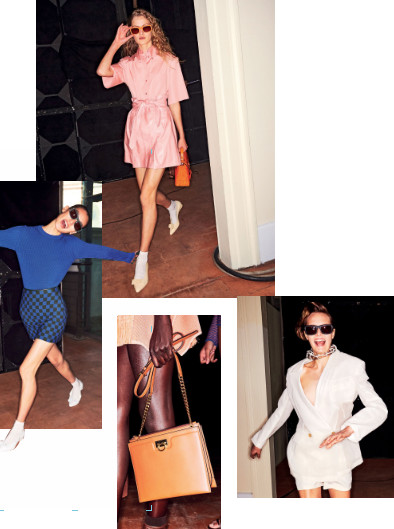THE FIRST SEASON OF THE NEW DECADE SAW A LEGION OF DESIGNERS ADDRESSING THE ISSUE OF SUSTAINABILITY AND LONGEVITY—WHETHER BY RETHINKING METHODS AND MATERIALS, IMBUING PIECES WITH MEANING AND PRECIOUSNESS TO BE CHERISHED FOREVER, OR STRIPPING BACK THE SUPERFLUOUS TO CRAFT DESIGNS THAT WILL STAND THE TEST OF TIME.


GUCCI

BOTTEGA VENETA

MIU MIU

PRADA


DIOR


ALEXANDER MCQUEEN

MONCLER GENIUS


LOUIS VUITTON


CHANEL

TOMMY HILFIGER

CELINE

BALENCIAGA

FENDI


MICHAEL KORS COLLECTION


BURBERRY


TORY BURCH



SAINT LAURENT

TOD’S

SALVATORE FERRAGAMO

COACH


RALPH LAUREN COLLECTION


LORO PIANA

LOEWE


DOLCE&GABBANA

MOSCHINO


KATE SPADE NEW YORK

GIVENCHY


HERMÈS
As with a few other designers this season, Nadège VanheeCybulski turned to house heritage to move the story forward. For her, it was the saddle-making artistry of Hermès that informed the collection’s apron silhouettes (lifted from the garb of the House’s craftspeople) and harness details. She employed these elements in a highly sophisticated wardrobe of tunics, trench coats, shift dresses, roomy trousers, fitted tanks and safari jackets. Bare skin peeking out from open sides and backs lent a light, sensual touch to a leather-heavy collection. Nineties minimalism has also been trending elsewhere this season, but no one else has managed to make it look so rich and tactile.


VALENTINO

CHLOÉ

MAX MARA

LONGCHAMP

VERSACE
Let’s start at the end. Donatella Versace won fashion month when she brought Jennifer Lopez out to close the show in a reiteration of the plunging palm-print dress she wore to the Grammys nearly 20 years earlier. Back then, the Internet doesn’t break, but the moment did trigger a major tech breakthrough: the creation of the Google Images search service. But before the finale to end all finales, there was a glorious parade of that iconic jungle print—rejigged in both slinky and sharp forms as well as in new hothouse colours; all printed, beaded or fringed. The designer injected a welcome counterpoint to the tropical exuberance with strict tailoring and femme-fatale dresses in severe black.























